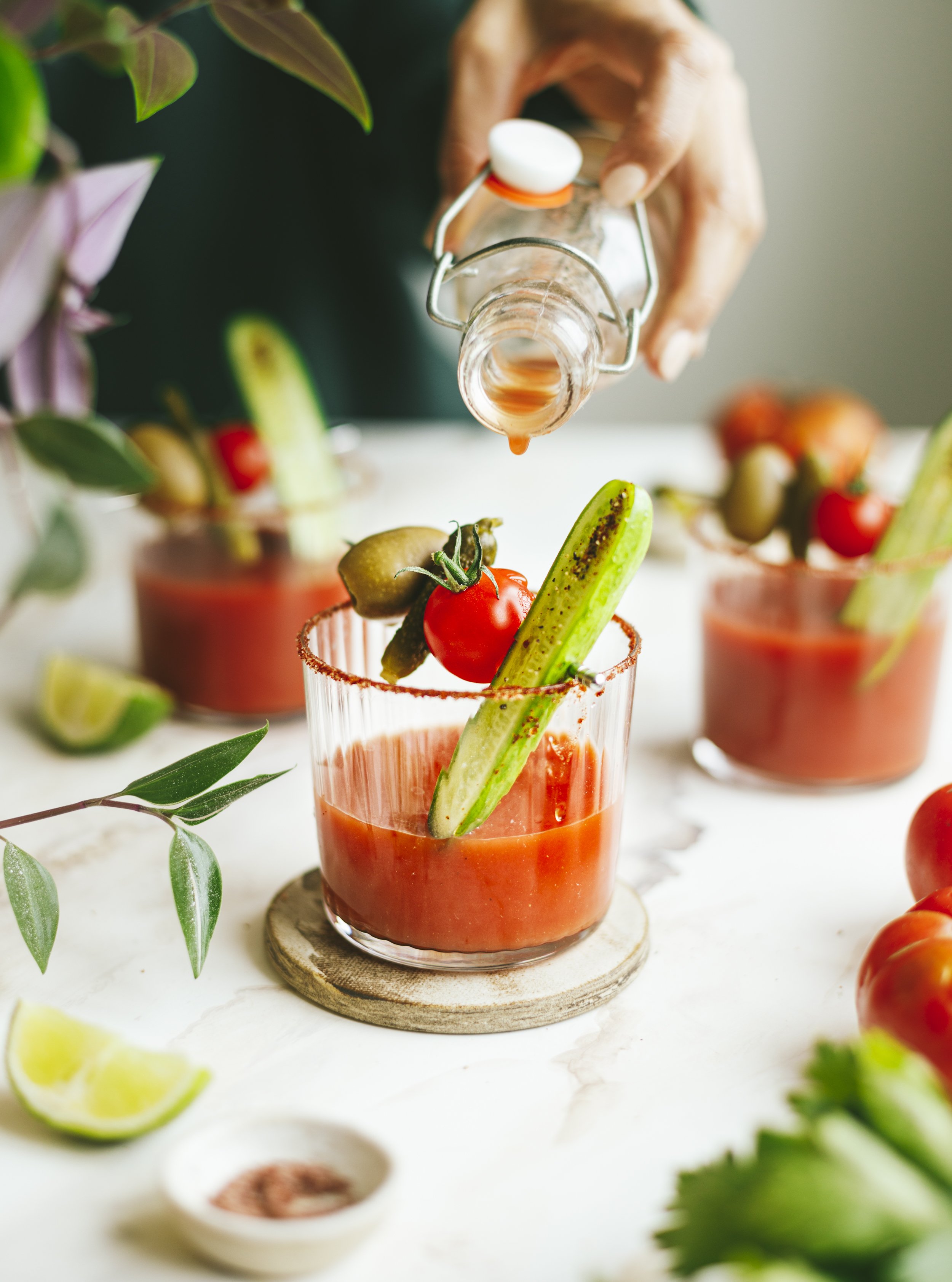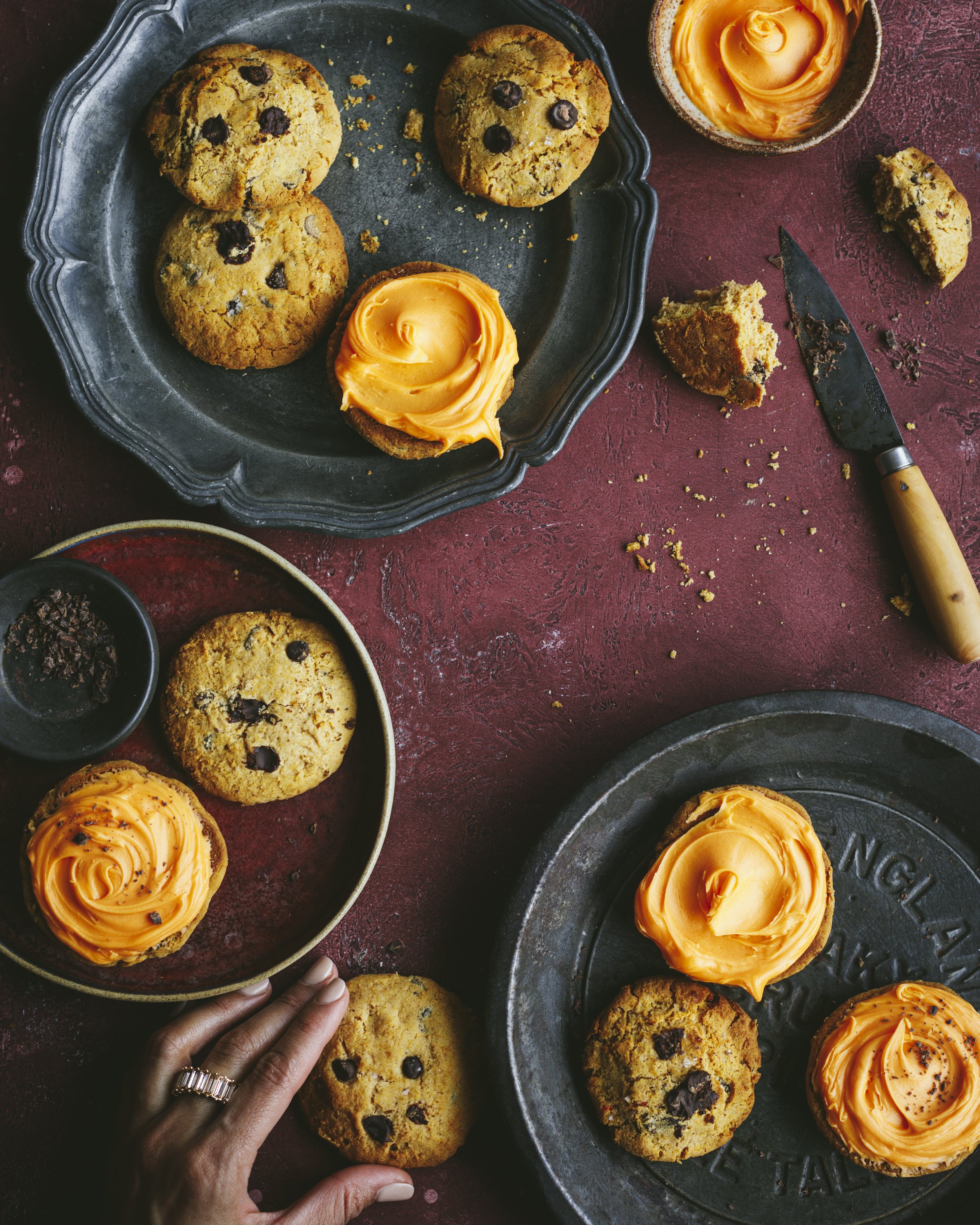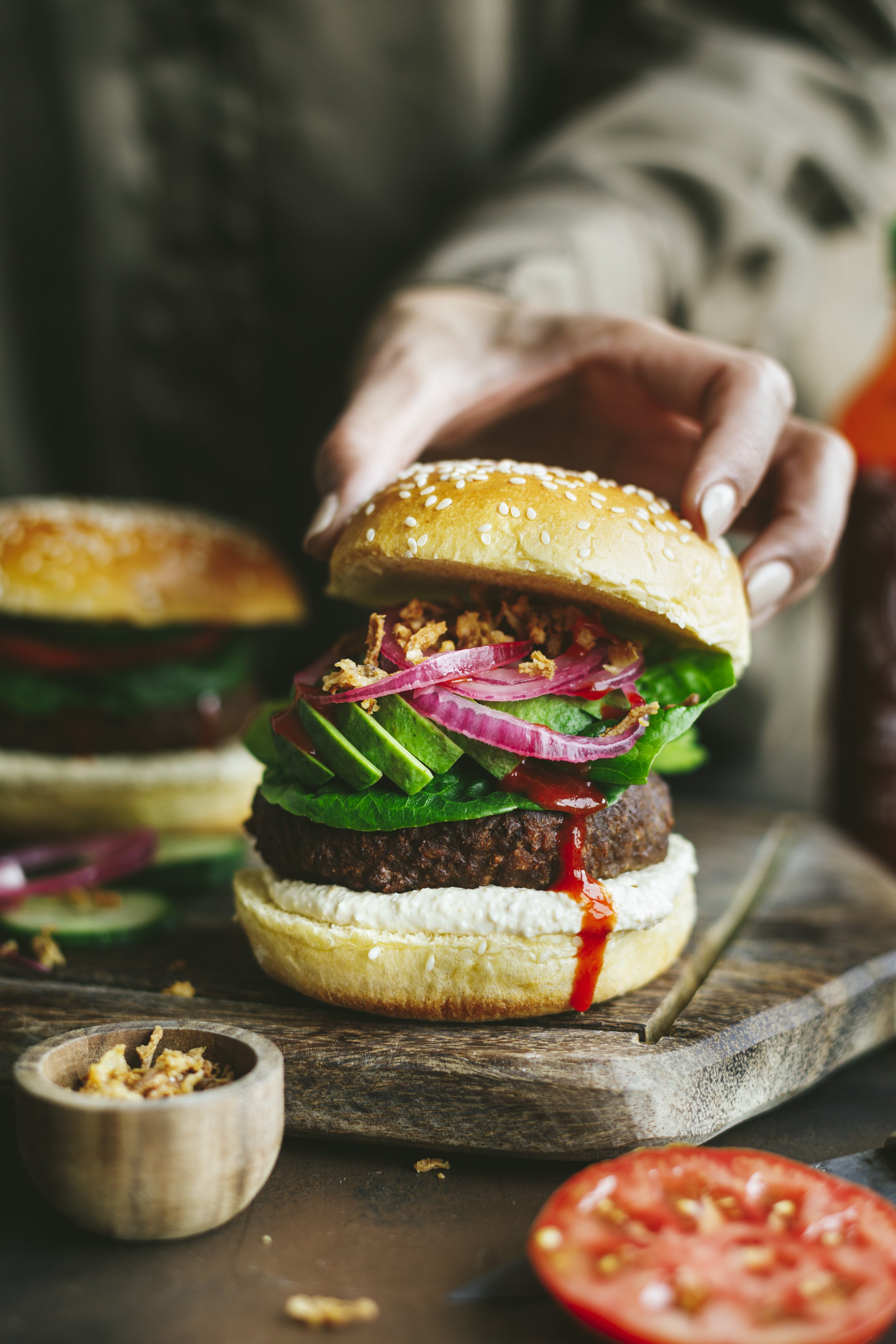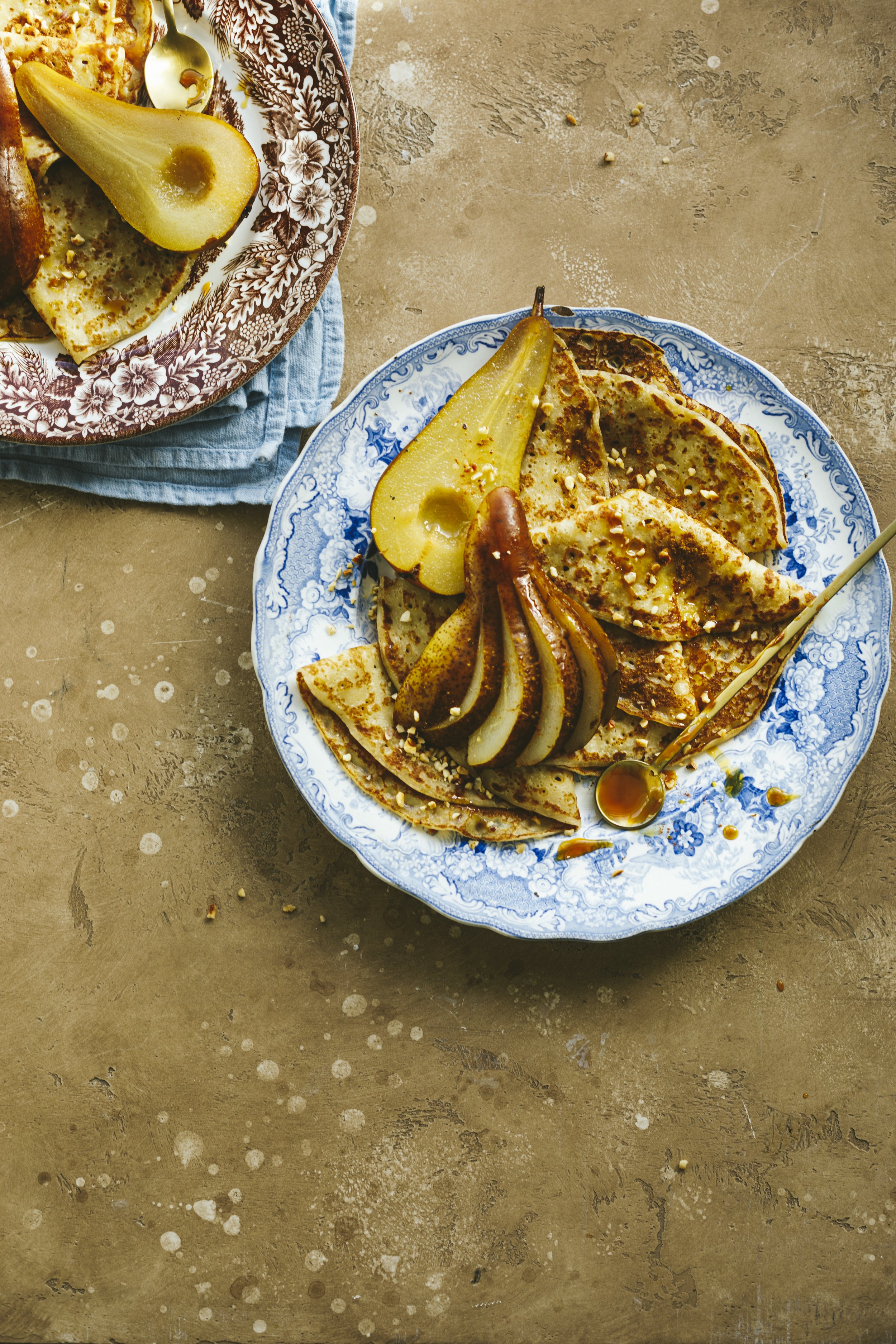SHOULD YOU STUDY FOOD PHOTOGRAPHY + VEGAN SPICED AUTUMN CAKE RECIPE
Are you thinking about joining a food photography online course, attending an in person food styling workshop or spending a few days at a food photography retreat, but unsure if it’s worth the investment and time?
Wondering if you’re able to learn all you need to know about food photography from free Youtube videos or simply confused about whether studying food photography online or in person is right for you?
If you’re feeling a little overwhelmed by all the choices available to you, then this blog post is just what you’re after. I’ll go over the pros and cons of studying food photography and food styling and outline exactly which learning format could be right for you!
(BTW if you’re just here for the vegan spiced cake recipe, please scroll down, you’ll find it at the end of this blog post!).
Things to consider if you want to study food photography……BUDGET
FREE RESOURCES
If you are on a tight budget and at the very start of your food photography and food styling journey, then watching all the Youtube videos and reading all the blog posts about food photography may be just the right choice for you! There are also free food photography challenges, like the Eat Capture Share challenge I host about two times a year on Instagram, which are ideal for those of you looking for free learning tools to get started.
FOOD PHOTOGRAPHY & FOOD STYLING ONLINE COURSES
If budget is a consideration, but you’ve outgrown the free resources available on the internet, you’re ready to delve deeper into your creative journey and find learning material that’s a little bit more solid and thorough, then an online food photography course, like my FOUNDATION online course may be just what you’re after. Though price points vary greatly for comprehensive online food photography courses, they tend to hover around the £297 - £497 mark depending on the teacher’s knowledge and experience, course content and length, bonuses and so on. I believe that if you know that your interest in food photography and food styling isn’t just a passing phase, then an online course could be a great next stepping stone for you!
IN PERSON WORKSHOPS
Because in person food photography and food styling workshops take a lot of time and energy to put together, they tend to be more costly than online courses. However, they also offer a more personalised experience and lots of opportunity to ask questions of your teacher in a way that’s simply not possible in an online format.
1-on-1 in person workshops are dearer than group in person workshops and hence, if price is a major consideration for you, I recommend exploring a group workshop before a more individualised in person workshop option.
FOOD PHOTOGRAPHY RETREATS
Food photography retreats take the in person workshop format to the next level and often also include accommodation and meals as part of the learning package. They are the creme de la creme and their price tag reflects this too! Retreats are a really immersive experience and apart from paying for what you learn, you’re also paying for the opportunity to feel inspired in ways you can’t otherwise, for being around other creatives, for the many creative break throughs that always happen at food photography retreats and so on! However, if budget is a consideration, then this option may be one to put on the back burner for now!
Things to consider if you want to study food photography……TIME & COMMITMENT
FREE RESOURCES
The beauty of free resources on the internet, is that you can consume this content when it best suits you, no commitment on your part required at all. This is ideal if you’re starting out and want to dip your toes into the food photography world without having the pressure of showing up at set times. If you’re working full time or parenting young children, then this can be a great way to learn without feeling overstretched. The flip side is that - if we don’t have skin in the game - you’re also less likely to do the work that can actually bring about meaningful transformation to your food images.
FOOD PHOTOGRAPHY & FOOD STYLING ONLINE COURSES
If you’re working full time, if you’re a busy parent or if you have 101 other commitments and are hence looking to learn food photography from the comfort of your home and within a flexible timeframe, then an online food photography course could be right for you! Many good online courses, like my FOUNDATION food photography online course, are broken up into short and sweet, bite sized modules, each with specific learning objectives that allow you to fit the classes around your needs whilst still giving you measurable, incremental and concrete learning outcomes.
That said, online courses do require a good level of self motivation and historically completion rates for online courses of any kind hover around the 20%-30% mark. Though completion rates for my FOUNDATION food photography course are considerably higher as we’ve build in A LOT of accountability and support into the course, what years of teaching have shown me is that online courses work best for self motivated students who love working at their own pace, block out dedicated study time and have a clear food photography goal in mind that they want to reach, no matter what!
IN PERSON WORKSHOPS & FOOD PHOTOGRAPHY RETREATS
The beauty of attending an in person workshop is that you can condense your learning into the duration of the workshop and generally cover all you want to learn within that timeframe (usually between 1-3 days). Yes, of course it means taking time off work or arranging a babysitter for the kids, yes of course you’ll have to continue practicing once the workshop is finished, but everything covered in a food photography and food styling online course, which you may string out for weeks or months on end, can be learned and implemented in just a few dedicated days! That experience is super inspiring and energising as you can see your progress and watch yourself grow as a food photographer and food stylist by the minute!
Hence, if you know that you find it hard to motivate yourself when left to your own devises, are a little more serious about your food photography, love the in person learning experience and relish in the opportunity to be in a creative environment, close to a teacher whose work you love, then exploring an in person workshop may be just right for you!
Everything mentioned above about food photography workshops applies to retreats too, with the added time commitment of travelling to and from the international retreat location and staying overnight.
Things to consider if you want to study food photography……SUCCESS
FREE RESOURCES
There are so many free resources out there, many of them ideal to get started and learn the basics of food photography from what camera to choose to how to capture a drink with a dramatic splash. However, for those of you eager to go next level and find success as a food photographer or food blogger, free resources do have their limitations. There’s no way to check your learning is on the right track, to delve deeper into a food photography technique such as visual story telling or more advanced lighting and it’s very easy to fall into bad habits and techniques because, well, you don’t know what you don’t know. Free resources also lack the element of accountability and with most educators keeping their best content behind paywalls, you know you’re never going to get the full picture, ultimately affecting your ability to find success in the industry!
FOOD PHOTOGRAPHY & FOOD STYLING ONLINE COURSES
A thoughtful and thorough online course covers everything you need to know to take your food photography to the next level; many food photography and food styling online courses go beyond the what and include a clear how, with teachers often sharing all their knowledge and insights to build your confidence and know-how!
For example, the aim with my FOUNDATION online course is that students leave with a solid knowledge of all key food photography skills, including composition, food styling, visual story telling, action shots, editing, colour theory and so on, to set them off on their path to success. My online course also focuses on finding your own style as from experience I know what helps you stand out in this crowded market, but other online courses may deep dive into artificial light or another specific element of food photography, simply not available for free on the internet. With this added layer of teaching - assuming you do the work and complete the course - your chances of success in the industry are that much higher!
IN PERSON WORKSHOPS
Personally, I feel that if you’re looking for success as a professional food photographer or food blogger or simply want to get REALLY good at food photography and food styling, an in person workshop can be THE icing on the cake, THE thing that helps you move away from the pack, assuming that when you attend, you already have a good, solid understanding of food photography. In other words, if success is what you’re after as a beginner - I’d recommend an online course first before taking the leap and attending an in person workshop. If you’re a little more advanced than the in person workshop can be the thing that propels you forward in ways no other learning experience can. An in person 1-2-1 workshop is what transformed things for me and changed the trajectory of my career 100%, it’s why I feel so passionate about it.
In fact all the shots you see here were taken during a two day in person workshop I hosted at my London studio. Talented student, Carolina, came all the way from the USA to work with me 1-2-1 and iron out some of her bad food photography habits (hello falling back to the same old camera setting ;)), explore visual story telling, capture movement shots and expand her portfolio as well as discover new ways to create engaging Reels (one of which you can see HERE). This in person 1-2-1 setting also allowed the learning experienced to be 100% tailored to her needs; she could use it as a spring board to take her work to a different level seeing that she already had a solid understanding of food photography under her belt before attending. Now the question is, what could an in person workshop do for you?
FOOD PHOTOGRAPHY RETREATS
When it comes to finding success as a food photographer or food blogger, in many ways a workshop and a retreat are on par, almost… I’d argue that a food photography retreat in a stunning location allows you to expand your portfolio beyond images of food, to include lifestyle, landscape, portraits etc. all within the context of food, making you and your portfolio much more attractive to prospective agents and food photography clients.
Stepping away from it all, into a brand new environment, steeped in creativity, surrounded by the most inspiring people you can imagine, will undoubtedly spark new ideas, open up new perspectives and with that new ways to capture food and the world around you.
Hence, if you’re already earning an income as a food photographer or food blogger and know that you’re ready to see food in new and exciting ways, do consider joining a food photography, food styling and visual story telling retreat. It can be completely transformational for you, your portfolio , your creativity and your food photography career.
Ready to see if my FOUNDATION food photography and food styling online course is for you?
Then be sure to head HERE.
Eager to join me in my London food photography studio like Carolina did and attend a 1-2-1 in person workshop?
New dates have just been released and can be found HERE.
Or are you ready to attend a food photography and food styling retreat?
Then head HERE to see what my sold out 2022 Finland retreat was like and join the waiting list below to be the first to hear when new retreat dates are set!
BTW the recipe for the spiced vegan layer cake can be found below!
VEGAN SPICED AUTUMN CAKE RECIPE
Recipe developed by Kimberly Espinel and Leiliane Valadares
Frosting recipe adapted from Minimalist Baker
Preparation time: 20 minutes
Baking time: 25 minutes
Serves: 8-10
INGREDIENTS FOR THE CAKE SPONGE
220g plain flour
3 flax eggs (3 tbsp ground flax seeds + 9 tbsp water)
50g ground almonds
1 tsp ground cinnamon
1 tsp ground cardamom
1 tbsp baking powder
pinch of salt
200g vegan butter (+ some for prepping the cake tins)
200g brown sugar
zest and juice of 1 orange
INGREDIENTS FOR THE BUTTERCREAM FROSTING
90g vegan butter, softened (not melted)
1 tsp vanilla
2 cups icing sugar, sifted
1 tsp vegan milk
freeze dried blueberry powder (optional, for colour)
caramelised sugar or date syrup (optional, for colour)
INGREDIENTS FOR THE GARNISH (OPTIONAL)
Seasonal fruit such as figs, poached pears and grapes
Cinnamon sticks
Non-toxic seasonal flowers
INSTRUCTIONS
Preheat the oven to 180C/350F. Grease and flour 2 round cake tins (7in/18cm diameter).
Combine the flax seeds and water in a bowl to make the flax eggs and set aside for 5 minutes.
In a bowl, sift and mix together the flour, spices, baking powder and salt, and set aside.
Whisk the vegan butter with the sugar until light and creamy and then add and mix in the flax eggs and the zest and juice of one orange until combined.
Add the dry ingredients to this mixture and whisk well until smooth. Divide the batter between the tins and bake for around 25 minutes. Check the cakes are done by inserting a wooden skewer or toothpick into the centre of each one. If the skewer comes out clean the cake is ready.
Let cool for 5 minutes and then turn out onto a wire rack. Cool completely before adding the frosting.
For the frosting, beat the vegan butter until creamy and light. Mix in the vanilla. Add the powdered sugar a little at a time, and continue beating until well incorporated, smooth and fluffy.
Remove 1/3 of the frosting and beat in some blueberry powder so it turns a light purple (optional). Add caramelised sugar to the rest of the frosting and beat until it turns light brown (optional).
Use the purple frosting to fill the cake and the light brown to frost the top and sides to create a ‘naked cake’ look.
Garnish with seasonal fruits, spices and flowers (optional).
Consume within 3 days and keep in an air tight container.
ALTERNATIVE FROSTING OPTIONS
Make less frosting (2/3 of the above amount will be enough to frost the top and sides) and fill the cake with a generous helping (about 4tbsp) of apricot jam or mamalade for added moisture.
You could also try the easy vegan frosting from this Vegan Rhubarb Layer Cake, or this Rustic Vegan Carrot Cake instead.
LOOKING FOR MORE VEGAN CAKE RECIPES?
Why not try my Rustic Vegan Carrot Cake, my Vegan Pistachio Tres Leches Cake or my Vegan Chocolate Orange Cake! All have been made and loved by countless blog readers!










